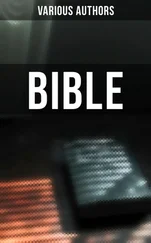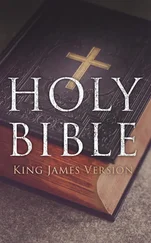MISHNA VII .: One who pares his finger-nails, either by means of his nails or by means of his teeth; also one who plucks hair from his head, beard, or lip,; also a woman who braids her hair, or paints her eyebrows, or parts her hair, is, according to R. Eliezer, culpable. The sages, however, declare this to be (prohibited only by rabbinical law) as a precautionary measure.
GEMARA: Said R. Elazar: "The difference of opinion exists only in the case of paring the finger-nails by means of the nails, but if taken off with an instrument (all agree) that he is culpable." Is this not self-evident? Is it not plainly written in the Mishna, if he pares his finger-nails, one by means of the others? One might think that the difference of opinion is also concerning an instrument, and the reason the Mishna does not mention an instrument is only to show the firmness of R. Eliezer in prohibiting the paring of finger-nails even with one's own nails. He informs us that the difference of opinion is concerning the nails only. R. Elazar said furthermore: "The difference of opinion is only concerning a man's paring his own finger-nails, but if he pared another's all agree that he is not culpable. (The reason for this is because when paring one's own finger-nails a man can make them look as if trimmed with an instrument, but when trimming another's this is not possible.)" Is this not self-evident? Did not the Mishna say plainly: "His own finger-nails"? Nay. One might think that according to the opinion of R. Eliezer the trimming of another's finger-nails also makes one culpable, but the Mishna, stating plainly "his own finger-nails," intends only to show the firmness of the rabbis in making not culpable even those who pare their own nails; therefore he informs that such is not the case.
" Also one who plucks hair from his head ," etc. There is a Boraitha: "One who cuts off a scissorsful of hair from his bead on the Sabbath is culpable." How much is a scissorsful supposed to be? Two hairs. R. Eliezer says: "One." The rabbis agree with R. Eliezer that in case one gray hair is plucked from a number of black hairs a man is culpable even for one, and not only on Sabbath but even on week days it is also prohibited, as it is written [Deut. xxii. 5]: "And a man shall not put on a woman's garment."
We have learned in a Boraitha, R. Simeon b. Elazar said: "If a finger-nail become separated from the finger of its own accord, a man may remove the adhering part, providing the greater part of the nail was separated. He may do this with his fingers, but not with an instrument. If he did it, however, with an instrument, he is not liable for a sin-offering. If the smaller part only was separated, he may not remove it. If he did so, however, with his fingers, he is not culpable, but with an instrument he is. Said R. Jehudah: "The Halakha prevails in accordance with R. Simeon b. Elazar." Said Rabba b. b. Hana in the name of R. Johanan "Provided the nail was bent upward and was troublesome."
" Also a woman who braids her hair ," etc. In what category can her work be counted? Said R. Abuhu: "It was explained to me by R. Jossi b. Hanina: 'Painting the eyebrows comes in the class of work enumerated as dyeing, braiding, and parting the hair in the class of building.'" Is this the manner of building? Yea; as R. Simeon b. Menassia taught: It is written [Gen. ii. 22] "And the Lord God formed 1the rib which he had taken from the man." From this maybe adduced that the Holy One, blessed be He, braided the hair of Eve and brought her to Adam. For in the seaports hair braiding and dressing is called building.
We have learned in a Boraitha, R. Simeon b. Elazar said: "Braiding the hair, painting the eyebrows, and parting the hair, if done for herself, does not make her culpable (because it cannot be properly termed building); but if done for another it does make her culpable." Furthermore, R. Simeon b. Elazar said in the name of R. Eliezer: "A woman shall not put red dye on her face, because that constitutes painting."
The rabbis taught: If one milked a cow and then made cheese of the milk to the size of a dried fig; if he swept a floor or dampened a floor (to lay the dust); or if he removed honeycombs from a beehive, his case is as follows: If he performed these acts unintentionally on Sabbath, he is bound to bring a sin-offering, and if he did all this intentionally on a biblical feast-day, he shall receive forty stripes. Such is the opinion of R. Eliezer, but the sages said: "All this is only prohibited by rabbinical law as a precautionary measure." (Says the Gemara:) Now the ordinance having prevailed according to the opinion of R. Simeon, all these acts are not prohibited at all.
MISHNA VIII .: One who plucks something from a perforated flower-pot is culpable; from a flower-pot that is not perforated he is not culpable. R. Simeon held him not culpable in both cases.
Abayi put a contradictory question to Rabha, according to others R. Hyya b. Rabh to his father Rabh: "The Mishna states that R. Simeon holds one not culpable in either case. From this we see well that to R. Simeon a perforated or a solid flower-pot is one and the same thing. We have learned in another Boraitha: R. Simeon said that there is no difference between a perforated and a solid flower-pot except to make the seeds grown in the flower-pot subject to defilement ( i.e. , in a solid flower-pot the seeds are not accounted as seeds). Hence there is a difference between the pots in the opinion of R. Simeon." The answer was: In all cases except defilement R. Simeon regards seeds in either a perforated or a solid flower-pot as loose ( i.e. , detached from the ground). In the case of defilement, however, it is different, because the Scriptures themselves added a special provision regarding defilement of seeds, as it is written [Lev. xi. 37]: "And if any part of their carcass fall upon any sowing-seed which hath been sown, it shall be clean."
END OF VOLUME I.
Footnotes
1The Talmudical term for" support" is "Agad," literally "bind." In the above the sense demands its rendition by "support."
1Numb. iv.
1The text reads Vaidon ; Luria corrects this to read Zaidon, as we have adopted, which means a falconer's horse. Hai, the Gaon, however corrects it Bazaidon, because a falconer in the Persian language is Baz, and one who occupies himself by hunting for birds is called Bazaidon.
2Name of a city.
1The Hebrew word for "formed" is "Vayiven," literally "built."
SYNOPSIS OF SUBJECTS OF VOLUME II.--TRACT SABBATH
Table of Contents
MISHNAS I., II., III., IV., and V. Throwing from private into private by way of public ground. What constituted the sin of the wood-gatherer. The mysterious scrolls found by Rabh in the house of his uncle R. Hyya concerning the principal acts of labor. What was the name of the wood-gatherer. Arraignment of R. Aqiba by Jehudah ben Bathyra for slandering Zelophchad, by naming him as the wood-gatherer, and for slandering Aaron, by stating that he had been punished by leprosy. Reward for merit comes more quickly than retribution for wickedness. Regulations concerning pits in public ground for the Sabbath. Throwing from a distance of four ells against a wall. Throwing within four ells, when the object thrown rolled to a greater distance. Throwing at sea for a distance of four ells, and throwing from the sea to land, or from one ship to another. Throwing a thing on Sabbath and recollecting that it was Sabbath immediately afterwards. If the thing thrown was caught by another. The rule concerning what constitutes committing an act through error, involving the liability for a sin-offering, 189-203
MISHNAS I., II., III., and IV. Concerning building. The amount of building involving liability for a sin-offering; the amount of ploughing. The writing of how many letters make one liable for a sin-offering; with which hand that is to be done. The wonderful statement of some young men at the schoolhouse, which was not heard of even in the time of Joshua the son of Nun. Why the letters of the word Sheqer (lie) are so close together (in the order of sequence of the alphabet) and the letters of Emeth (truth) so far apart? Because lies are very frequent and truth very scarce. Tattooing. Ben Sattadai, being a fool, cannot be cited as an instance, 204-212
Читать дальше












